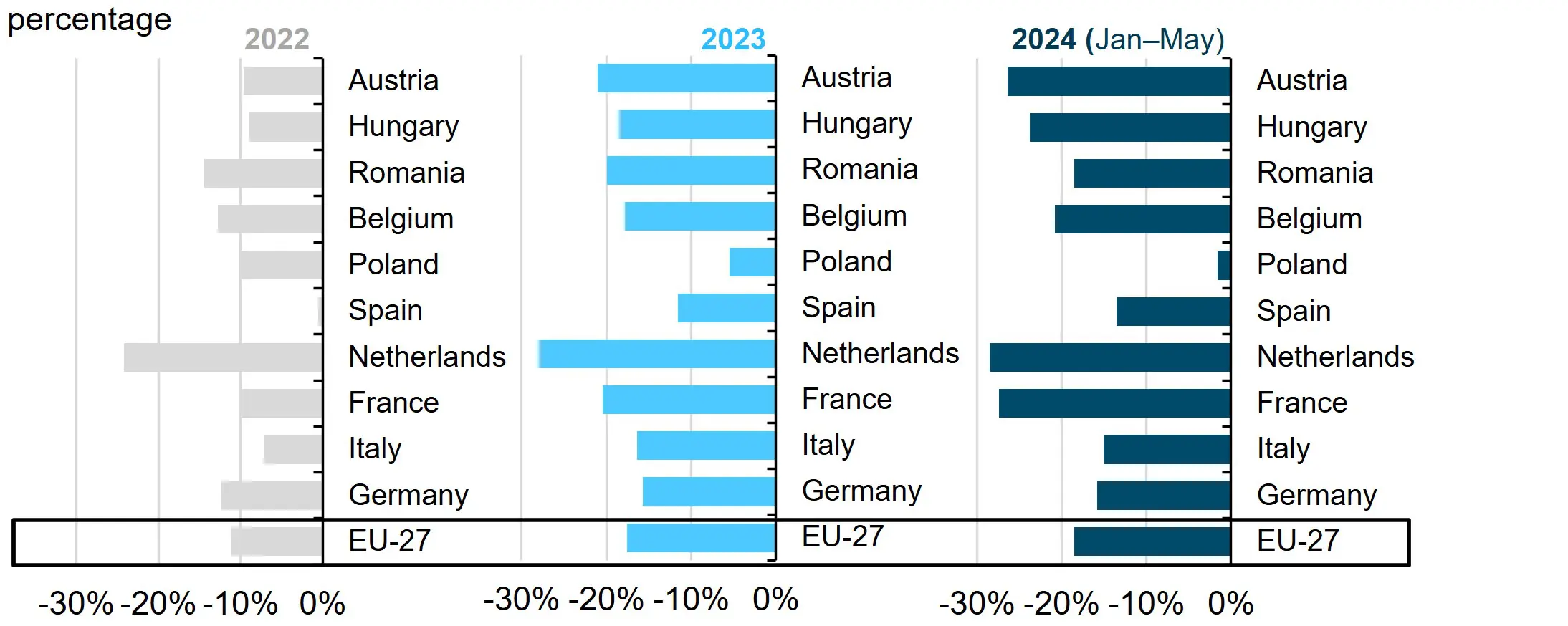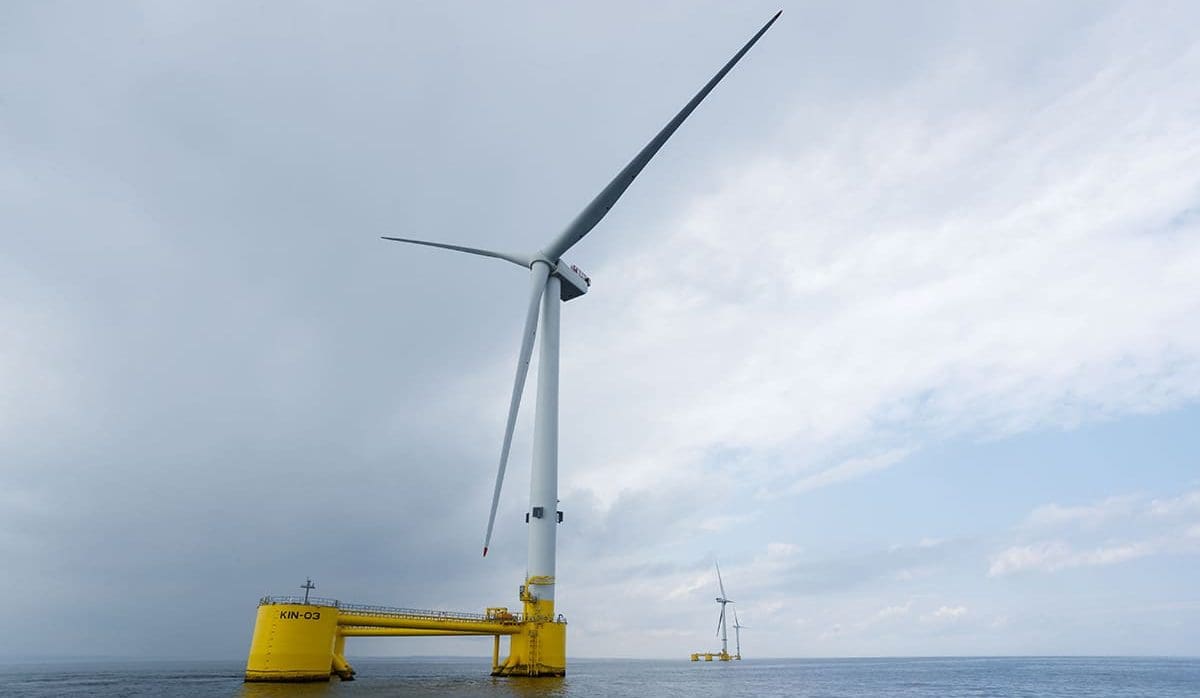
Less Natural Gas Consumption In Europe Is Keeping Storage Full

This article was written by Victoria Zaretskaya.
Consumption of natural gas in Europe has consistently decreased since mid-2022, driven by a combination of mild winter weather and government policies aimed at reducing natural gas consumption. In 2023, natural gas consumption in the European Union’s 27 member countries (EU-27) declined 18% from the previous five-year (2017 to 2021) average according to Eurostat data. During the first five months of 2024 (January to May), consumption remained 19% below the 2017 to 2021 average for the same months.
In 2022, after a significant decline of pipeline imports from Russia, European governments enacted coordinated demand-reduction measures. Those measures mandated a minimum 15% reduction in natural gas consumption from August 2022 to March 2023. These policies were subsequently extended through March 2025.

(Graphic Courtesy Of The EIA; Data Source: Eurostat)
The EU-27’s four countries with the most natural gas consumption — Germany, Italy, France, and the Netherlands — account for about two-thirds of the consumption in the region. Natural gas consumption was reduced in these countries by a combined 5 Bscf/d (141.5 × 106 m3/d) in 2023 and 6 Bscf/d (169.9 × 106 m3/d) during the first five-months of this year compared with the five-year (2017 to 2021) average prior to the government policies. Natural gas consumption declined in most EU-27 countries. Since enactment of the policy, the top 10 natural gas-consuming countries have seen consumption reduced in a range from 1% to 28%.
Two mild winters in a row (2022 to 2023 and 2023 to 2024), combined with reduced natural gas consumption due to European government policies and more electric generation from renewable sources, led to record-high end-of-heating-season storage inventories in both 2023 and 2024. As of April 1, 2024, natural gas storage facilities in Europe were 59% full — the highest percentage on record for the end of a heating season (November 1 through March 31) — according to data from Gas Infrastructure Europe’s Aggregated Gas Storage Inventory.

On March 31, 2024, the last day of the heating season, Europe’s natural gas storage levels were 83% above the previous 13-year average for the same day. From January through June 2024, Europe’s storage inventories remained at all-time highs, closely tracking last year’s storage levels.

(Graphic Courtesy Of The EIA; Data Source: Gas Infrastructure Europe)
Europe’s natural gas pipeline receipts from Russia declined by 58% (6.3 Bscf/d) in 2022 and 89% (9.7 Bscf/d [274.6 × 106 m3/d]) in 2023, compared with the 2021 annual average. Europe has primarily used liquefied natural gas (LNG) imports to offset reduced imports from Russia. In 2023, LNG imports into EU-27 and the UK averaged 14.5 Bscf/d (410.5 × 106 m3/d), remaining essentially unchanged from 2022, according to data by the International Group of Liquefied Natural Gas Importers. The United States remained the largest LNG supplier to Europe for the third consecutive year in 2023, providing almost one-half of all its LNG imports. LNG import facilities were added in Germany in 2023, and Germany accounted for 5% of all EU-27 and UK imports. Most (83%) of 2023 LNG imports into Germany were supplied by the United States.









